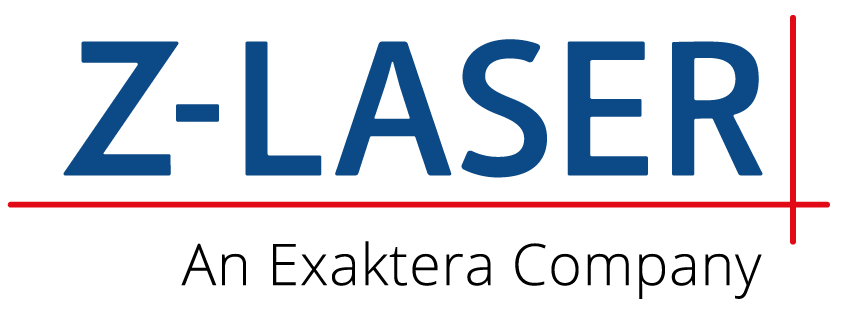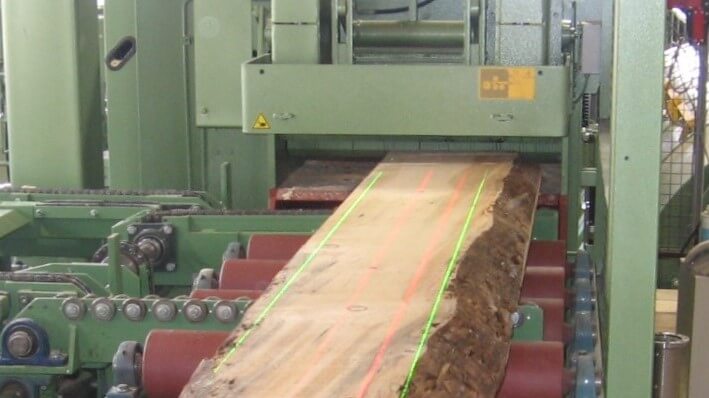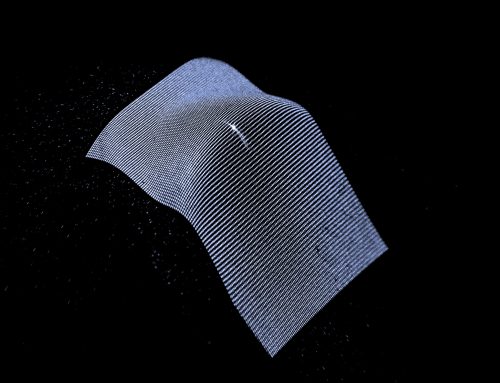Trimming is the next processing step after cutting a tree trunk into individual planks on the bevel saw. The dull edge (bark) is removed and the plank becomes a board with parallel outer edges. Trimming can be carried out on any circular bench saw. However, it is now common in industrial wood processing to use state-of-the-art multi-blade saws. These not only trim the plank but also split it up directly into smaller units with various width dimensions. The individual saw blades (see picture) are adjustable. Multi-blade saws are often used in combination with scanners, which measure the plank in advance and provide a cutting proposal that is then automatically implemented.
Effective support in optimising the use of materials can be gained from line lasers. These are installed on linear axles above the machine infeed and are coupled with the saw blades. Thanks to the red or green lines that are projected onto the plank, the operator can adjust the saw blades for optimum results during trimming and cutting. This saves time AND material!
Challenge for the laser:
The lasers should be dust-proof, although the level of dust formation is not likely to be very high with modern machines due to their connected vacuum systems. The laser lines should be a good five metres long from the machine infeed onwards, and should be clearly visible to the operator, who is often sitting in a cabin some distance away.
Z-LASER recommendation:
We recommend red and green line lasers with a strength of at least 15 or even 40 mW from our ZM18 series.
Do you have questions about this or similar applications? Our Sales Manager Stefan Frei will be glad to help you.






